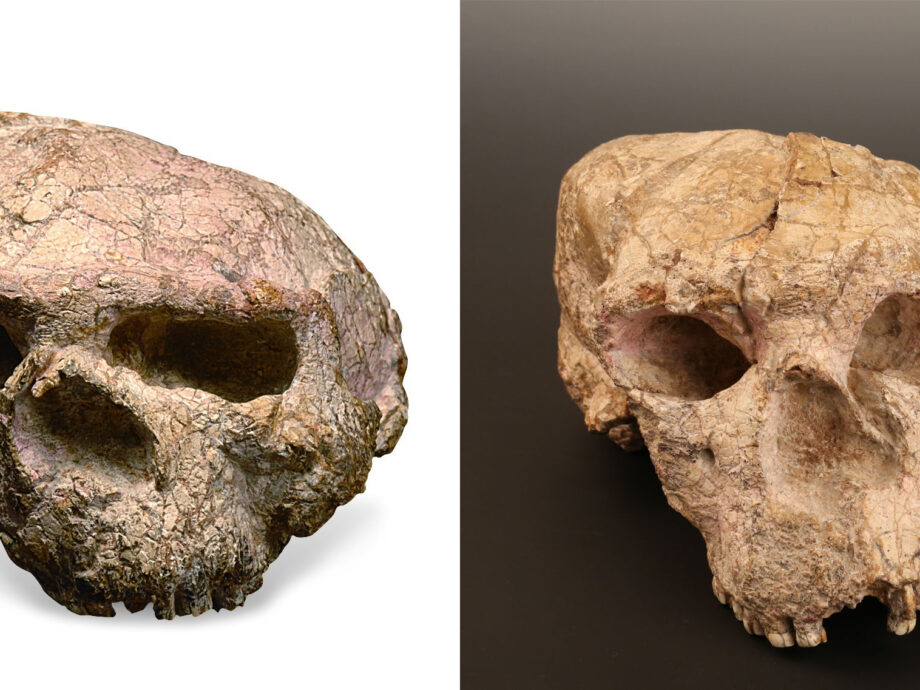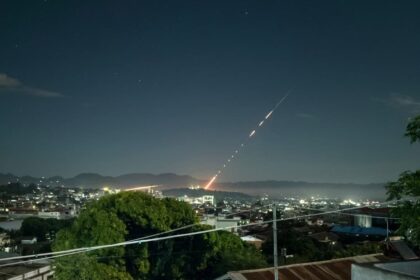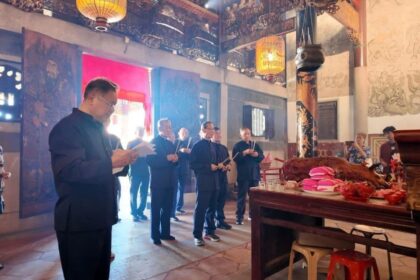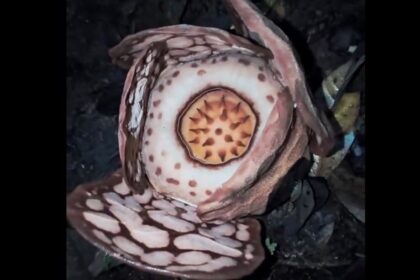A skull from China pushes human origins deeper in time
A crushed cranium discovered on a river terrace in Hubei province in central China has become a new reference point for the story of our species. Using advanced scanning and digital reconstruction, an international team has virtually restored the second Yunxian skull, also called Yunxian 2, and compared it with more than a hundred human fossils. The results point to an early member of a lineage that includes Homo longi, sometimes called Dragon Man, and the elusive Denisovans. The analysis suggests that the main branches leading to Homo sapiens, Homo longi and Neanderthals split far earlier than many scientists had thought, perhaps more than 1.3 million years ago.
- A skull from China pushes human origins deeper in time
- What researchers found inside the Yunxian skull
- A family tree that splits earlier than expected
- Why this matters for the story of us
- How a crushed cranium was virtually restored
- Debate, limits and what evidence could settle it
- Where early human groups lived and moved
- Key Points
The finding reframes a key chapter in human evolution often described as the muddle in the middle, the confusing stretch from about one million to three hundred thousand years ago. The reconstructed Yunxian 2 skull shows a striking mix of features. Some look like Homo erectus, a widespread early human. Others look closer to later large brained humans from Asia. The team places Yunxian 2 close to the root of an Asian clade that includes Homo longi and likely the Denisovans. If this placement holds, then the population that gave rise to our species, Neanderthals and Denisovans had already separated into distinct groups by around one million years ago.
What researchers found inside the Yunxian skull
Yunxian 2 was discovered in 1990 at Xuetangliangzi near the Hanjiang River. The skull had been flattened and warped during burial, which made early identification difficult. After a careful virtual restoration, researchers could evaluate its original shape and dimensions. The skull is long and low with a stout brow, a broad and flat braincase, and a face that is large but relatively flat with low cheekbones. The cranial capacity exceeds one thousand one hundred milliliters, the largest known for a human of this age, and within the lower range for modern humans. The combination of a receding forehead and robust brow with flatter cheekbones and a larger brain sets the fossil apart from classic Homo erectus.
How old is the fossil
Dating comes from the sedimentary layer and animal fossils found with Yunxian 2, supported by techniques such as magnetostratigraphy and radiometric methods. The team places the skull between nine hundred forty thousand and 1.1 million years old. That age makes it one of the oldest large crania with a modern sized braincase found in Asia.
A mosaic of old and new traits
Yunxian 2 presents a mosaic of features that bridge older and younger humans. The skull roof is thick and long with a low vault, similar to Homo erectus. The face is broad yet relatively flat, with low and shallow cheekbones and a wide nasal opening. The back of the skull is expanded. The palate is broad and the ear region shows distinctive details also seen in other fossils from the proposed longi group. These shared traits, together with a larger brain, match later Asian fossils such as the Harbin skull and Jinniushan, and help define a separate Asian clade.
A family tree that splits earlier than expected
To map relationships, the researchers used measurements and anatomical traits from one hundred plus skulls and jaws. They built a phylogenetic tree, a branching diagram that estimates how different human groups are related. In this analysis, Neanderthals branch off first at around 1.38 million years ago. The lineages leading to Homo sapiens and the longi clade then separate at about 1.32 million years ago. In other words, Denisovans and their longi relatives appear closer to modern humans than Neanderthals. The study places Yunxian 2 very near this split, which helps explain why the skull blends primitive and more derived traits.
Who are the Denisovans
Denisovans are known mostly from ancient DNA extracted from a few fragmentary bones and teeth, first identified in 2010 in Denisova Cave in Siberia. Genetic traces of their ancestry are found today in many people across Asia and in high levels among some populations in Melanesia and the Philippines. The new analysis argues that the Denisovans sit within the Homo longi clade, a lineage documented by Asian fossils such as the Harbin skull. If correct, Denisovans were widespread across Asia for hundreds of thousands of years, interacted with other humans, and contributed DNA to modern populations.
Why this matters for the story of us
Human evolution from one million to three hundred thousand years ago is packed with fossils that are difficult to classify. Some come from Africa, some from Europe, and many from Asia. Scientists have long disagreed on how these finds fit together. The new study groups Asian Middle Pleistocene humans into a longi lineage that is separate from Homo sapiens and Neanderthals. That reorganization would resolve many of the mismatches that have puzzled specialists and could explain why several Asian fossils have seemed neither classic Homo erectus nor early modern human.
The work also pushes the timeline of divergence for large brained humans well past one million years. If the three main branches were already distinct that early, then early members of these branches may have coexisted for a long time. That would extend the period when different human groups could meet, interact and sometimes interbreed. It would also shift the focus of research toward older sites in Asia and Africa that can test this older split.
Chris Stringer, research leader in human evolution at the Natural History Museum in London and a coauthor of the study, underscored the stakes.
“This changes a lot of thinking because it suggests that by one million years ago our ancestors had already split into distinct groups, pointing to a much earlier and more complex human evolutionary split than previously believed.”
Some interpretations go further and suggest that a common ancestor near western Asia could have given rise to the branches that became Homo sapiens, Neanderthals and the Denisovans. That claim is still debated. The oldest fossils that are widely accepted as early Homo sapiens remain in Africa at about three hundred thousand years. The new reconstruction does not change that record, but it does argue that the deeper stem population that later led to our species separated from other humans much earlier than many studies have proposed.
How a crushed cranium was virtually restored
The Yunxian 2 skull had been distorted by the weight of sediment and ground movement over many thousands of years. This kind of deformation bends and twists bone, which can hide or exaggerate key features. The team used computed tomography to see through the rock matrix, structured light scanning to capture surface details, and digital retrodeformation to reverse the crushing. In practical terms, this is digital surgery. The researchers segmented bone from stone, mirrored intact parts to replace missing sections, and used anatomical constraints to bring the pieces back into alignment.
Professor Xijun Ni of Fudan University and the Institute of Vertebrate Paleontology and Paleoanthropology in Beijing co led the work. He described the surprise the team felt when the restored skull and the family tree results first came together.
“From the very beginning, when we got the result, we thought it was unbelievable. We tested it again and again, using all the models and methods, and now we are confident about the result. We are actually very excited.”
The study also draws support from a suite of Asian fossils that share cranial traits with Yunxian 2 and the Harbin skull. These include Dali and Jinniushan in China and other specimens long considered hard to place. A third skull from Yunxian, discovered in 2022, is under preparation. Once analyzed, it will provide another test of the reconstruction and the grouping of these fossils into the longi clade.
Debate, limits and what evidence could settle it
Many genetic studies have estimated that modern humans, Neanderthals and Denisovans split from a shared ancestor between seven hundred thousand and five hundred thousand years ago. These estimates rely on models of mutation rates and population histories and have limited resolution at deep time. Morphological trees, built from skull traits, offer a different way to study old splits, but they have their own limits. Traits can evolve in parallel in unrelated groups, and the choice and weighting of characters can shape the result.
Several experts welcome the Yunxian 2 reconstruction yet urge caution about the family tree dates. Frido Welker, an associate professor in human evolution at the University of Copenhagen, noted that the new skull model is a major resource but that molecular tests would help confirm its placement.
“It is exciting to have a digital reconstruction of this important cranium available. If confirmed by additional fossils and genetic evidence, the divergence dating would be surprising. Alternatively, molecular data from the specimen itself could provide insights that confirm or challenge the morphological hypothesis.”
Ryan McRae, a paleoanthropologist at the Smithsonian National Museum of Natural History who was not involved in the research, praised the restoration yet questioned the broader tree.
“The reconstruction looks strong and the fit with the longi and Denisovan line is reasonable. The phylogenetic tree tries to answer many hard questions at once with limited data. The proposed timing is older than expected, and that will need to be cross checked against more fossils and genetic evidence.”
Genetic material is rare in million year old fossils, but other molecular traces, such as ancient proteins, have sometimes survived that long. Broader sampling in Africa, Asia and Europe, including more complete skulls and jaws, could make the picture clearer. The authors of the new study have said they plan to extend their analysis with additional fossils and data.
Where early human groups lived and moved
The new model raises a basic question about geography. Did the ancestral populations of Homo sapiens, Neanderthals and the longi clade live inside Africa or outside? Africa is the earliest home for the human line and retains the oldest fossils of Homo sapiens at about three hundred thousand years. At the same time, Homo erectus had spread into Eurasia almost two million years ago, and Asia holds many Middle Pleistocene sites. If the deep separation of lineages happened around 1.3 million years ago, it might have involved populations spread across both continents.
There is growing evidence that ancient humans were mobile, formed small groups, and sometimes interbred when they met. Neanderthals and Denisovans share a history of gene flow with modern humans, and traces of Denisovan DNA today show that the longi clade was widespread across Asia. That pattern fits a branching tree with occasional connections, rather than a clean replacement of one group by another. A million years is a long time for lines to meet and mix.
For now, the safest reading is that Yunxian 2 captures an early stage in a major Asian lineage with a large brain and a flatter face, a lineage that likely includes the Denisovans. The study argues that this line separated from the one that led to modern humans more than a million years ago. Whether that split occurred in Africa, western Asia or across a wide region remains to be tested by future finds. Each new skull or jaw that can be securely dated and reconstructed has the potential to change the picture again.
Key Points
- A virtual reconstruction of the Yunxian 2 skull from central China places it near the base of the Homo longi clade that likely includes the Denisovans.
- Dating of the fossil to between nine hundred forty thousand and 1.1 million years makes it one of the oldest large crania with a modern sized braincase found in Asia.
- A new analysis of more than one hundred fossils suggests that Neanderthals branched off around 1.38 million years ago, and the longi and sapiens lineages split at about 1.32 million years ago.
- The study proposes that Denisovans are closer to Homo sapiens than Neanderthals, which challenges common genetic models.
- Asian Middle Pleistocene fossils such as Harbin, Dali and Jinniushan align with the longi clade, helping resolve long standing classification problems.
- Experts welcome the reconstruction but caution that deep time divergence dates need confirmation from genetic or protein evidence and more fossils.
- The results do not move the oldest accepted Homo sapiens fossils from Africa, but they push the deeper separation of human lineages well past one million years.
- A third Yunxian skull discovered in 2022 and other upcoming finds in Africa and Asia could test and refine the proposed family tree.












